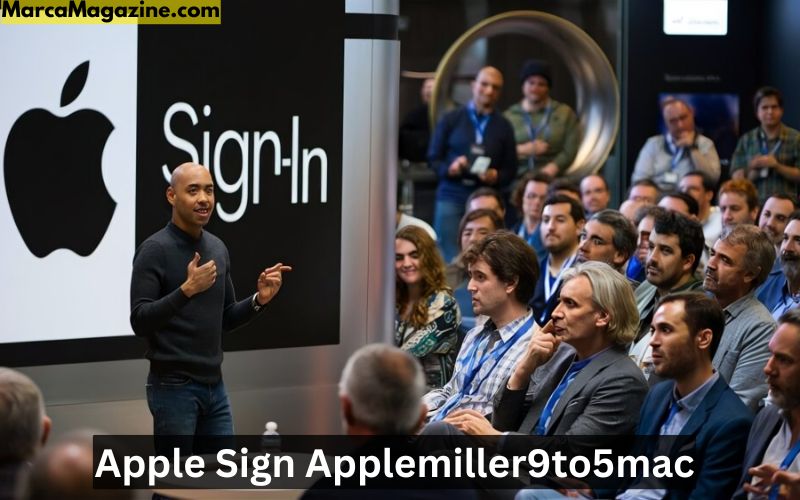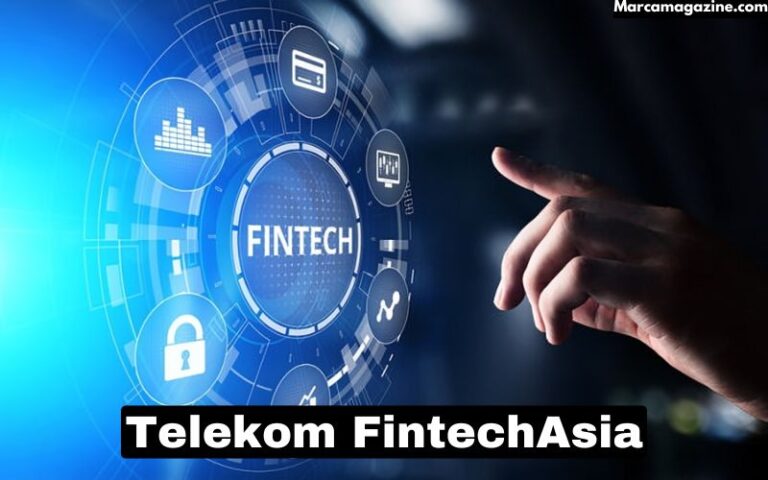In the ever-evolving world of technology, few companies have captured the imagination of both consumers and industry insiders as consistently as Apple. Since its founding in 1976, Apple has reshaped industries from personal computing to mobile phones, creating an ecosystem that prioritizes design, user experience, and seamless integration across all devices. One of the newest developments that continues to pique the interest of tech enthusiasts is Apple’s deepening integration with its digital services and software platforms, often discussed on tech blogs like Applemiller9to5mac.
This article dives deep into the world of Apple, exploring the idea of “Apple Sign” and the influence of Applemiller9to5mac, a leading source of news, rumors, and analysis related to Apple. While “Apple Sign” may refer to several concepts, such as Apple’s signing methods for developers or its unified sign-in solutions for users, this article will cover key facets of Apple’s ecosystem that link closely with these concepts. We will look at how Apple has cultivated user trust, privacy, and simplicity through its design and security approaches and how platforms like Applemiller9to5mac continue to shape the understanding of Apple’s brand.
The Apple Ecosystem: More Than Just Devices
Apple’s success isn’t just due to its hardware products—such as the iPhone, iPad, Mac, or Apple Watch—but rather the tightly-knit ecosystem that ties everything together. Apple’s ecosystem allows users to effortlessly move from device to device, maintaining productivity, entertainment, and communication without interruptions.
For example, iCloud allows users to sync data across devices, so a document created on a Mac can be easily accessed from an iPhone or iPad. Features like Handoff and Universal Clipboard allow users to transfer tasks and data seamlessly between devices. AirDrop simplifies file sharing between Apple devices, and Continuity enables calls and texts on non-iPhone Apple devices.
All of this is part of Apple’s mission to create an intuitive and cohesive experience for users, where they don’t have to think about switching from one device to another. This tightly controlled ecosystem may come at a price—such as limited customizability compared to other platforms—but it has allowed Apple to maintain strong control over user experience and privacy.
Apple Sign-In: Privacy-Centric Authentication
In a world increasingly concerned with digital privacy, Apple has distinguished itself by positioning user privacy at the forefront of its technology and services. One notable example of this is Sign in with Apple, a feature introduced in iOS 13 that allows users to sign in to third-party apps and websites using their Apple ID, but without sharing personal data.
With traditional login methods like Google or Facebook sign-ins, users are often required to share their email address and other personal information. Apple Sign-In takes a different approach by letting users hide their real email address and instead use an automatically generated, random email address to communicate with apps. This approach provides an added layer of privacy while keeping the login process simple and secure.
Key benefits of Sign in with Apple include:
- Privacy Protection: Users can choose whether to share their actual email address or use a randomized, Apple-managed relay email.
- Simplified Login Process: No need to remember multiple usernames or passwords; users can sign in with their Apple ID and rely on Face ID or Touch ID for authentication.
- Enhanced Security: Apple employs two-factor authentication and end-to-end encryption for all Sign in with Apple sessions, providing an extra layer of security that has become increasingly crucial in today’s digital landscape.
The importance of these features in the broader tech landscape cannot be overstated. As we increasingly rely on digital platforms for everything from banking to shopping, ensuring that our data remains private and secure is paramount. Apple’s continued emphasis on privacy has positioned it as a leader in this area, further reinforcing the brand’s trustworthiness.
Applemiller9to5mac: A Tech Community Hub
Applemiller9to5mac has emerged as one of the most influential online sources for Apple-related news, covering product releases, software updates, and industry rumors. With a dedicated focus on Apple, this blog serves as a go-to resource for millions of Apple enthusiasts, developers, and tech journalists.
What sets Applemiller9to5mac apart is its detailed and often exclusive reporting on Apple’s inner workings. Whether it’s leaks about the next iPhone model, previews of new features in macOS, or deep dives into Apple’s software development kits (SDKs), the blog has cultivated a reputation for being a trusted source of Apple insights.
Here’s why platforms like Applemiller9to5mac matter:
- Up-to-Date News: Apple’s product ecosystem is constantly evolving, and staying up to date on the latest releases and features is critical for tech enthusiasts, professionals, and businesses that rely on Apple’s tools and devices.
- In-Depth Analysis: Beyond breaking news, Applemiller9to5mac often provides deeper analysis of Apple’s business strategy and design choices, helping users and developers understand not just what Apple is doing, but why.
- Community Engagement: The site’s forums and comment sections provide an online space for Apple fans to connect, share tips, and discuss potential future developments.
Apple’s Developer Ecosystem: Signing and App Distribution
One critical element that ensures the safety and security of Apple’s ecosystem is the company’s approach to app distribution and developer sign-ins. Apple requires all apps distributed on its platforms to be signed with developer certificates, ensuring that the software has been vetted by Apple and is safe for users to download.
To develop for Apple’s platforms, developers must enroll in the Apple Developer Program, which grants them access to the tools and resources needed to create apps for iOS, macOS, watchOS, and tvOS. Once an app is developed, it must be digitally signed using an Apple-issued certificate. This certificate verifies the identity of the developer and confirms that the app has not been tampered with since it was signed.
Apple’s strict policies around app signing help maintain the security of its platform in several key ways:
- Preventing Malicious Software: By requiring apps to be signed, Apple can block apps that don’t meet its security or quality standards from being distributed on its platforms.
- User Trust: When users download apps from the App Store, they can trust that these apps have been reviewed and approved by Apple, minimizing the risk of malware or other security threats.
- Developer Accountability: App signing holds developers accountable for the software they create, ensuring that they adhere to Apple’s guidelines for privacy, security, and functionality.
This approach has its critics—particularly those who argue that it gives Apple too much control over the app distribution process. However, from a security and privacy standpoint, app signing has been highly effective at maintaining the integrity of Apple’s ecosystem.
Apple and Privacy: A Cornerstone of the Brand
Privacy is a core element of Apple’s marketing and product design. This focus has become even more pronounced in recent years, as Apple has sought to differentiate itself from competitors like Google and Facebook, whose business models rely heavily on advertising and data collection.
Apple’s privacy-centric features extend far beyond Sign in with Apple. Features like App Tracking Transparency (introduced in iOS 14.5) give users more control over their data by requiring apps to get explicit permission before tracking their activity across other companies’ apps and websites. Additionally, Apple’s privacy labels, which show users what data apps collect before they download them, offer unprecedented transparency into app practices.
The importance of privacy is not just a selling point for Apple but a defining feature of its ecosystem. Here are some other key privacy features that demonstrate Apple’s commitment to protecting users:
- On-Device Processing: Apple processes data like facial recognition for Face ID and Siri requests directly on devices rather than sending it to the cloud, reducing the risk of data breaches.
- iCloud Encryption: Data stored in iCloud, such as photos, contacts, and calendar entries, is encrypted both in transit and at rest. This means that even if someone were to intercept the data, they wouldn’t be able to access it without the encryption keys.
- Safari’s Privacy Focus: Apple’s Safari browser includes features like Intelligent Tracking Prevention, which prevents advertisers from tracking users across the web.
The Future of Apple and Applemiller9to5mac
As Apple continues to expand its ecosystem, integrating more services and devices, the influence of platforms like Applemiller9to5mac will only grow. By providing users with timely and accurate information about Apple’s latest developments, these platforms play a crucial role in educating and engaging the Apple community.
Looking ahead, it’s clear that Apple will continue to push the boundaries of what’s possible in terms of privacy, security, and user experience. With rumors of future devices like Apple’s AR/VR headsets, electric vehicles, and continued advancements in AI and machine learning, the company shows no signs of slowing down.
As we move forward, users can rely on trusted sources like Applemiller9to5mac to stay informed about Apple’s latest innovations. Whether you’re a developer building the next great app, a business professional leveraging Apple’s tools, or a consumer looking to stay up to date with the latest gadgets, the Apple ecosystem—and the information provided by dedicated platforms like Applemiller9to5mac—will continue to shape the future of technology.
See Also: www.politicser.com Pepperboy News
Conclusion
Apple’s ecosystem is a complex, interconnected web of devices, software, and services, all designed with a singular goal: to offer users the most seamless, secure, and enjoyable experience possible. Whether you’re signing into an app using Apple’s secure sign-in options or reading up on the latest tech news via Applemiller9to5mac, it’s clear that Apple has cultivated an ecosystem that prioritizes privacy, security, and usability. As technology continues to evolve, Apple’s commitment to these principles will remain a cornerstone of its success, setting it apart from competitors and cementing its place as a leader in the tech industry.









